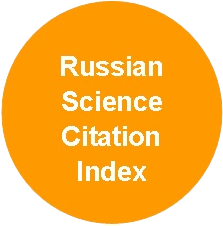Age Reversion of the Rank Distribution of Aboveground Biomass Fractions in the Genus Salix L.
DOI:
https://doi.org/10.37482/0536-1036-2025-5-180-186Keywords:
Salix L., fractions of the aboveground plant biomass, the Zipf–Pareto model, regression analysis, age reversal of the rank distribution of fractionsAbstract
Plant organs perform many different functions. The leaves provide the supply of assimilates, the stem and branches provide photosynthesis, transportation of water and nutrients, and the roots supply water and nutrients and contribute to physical stability. To achieve optimal performance at the plant level as a whole, there is a certain proportionality between these functions, which is mediated by the amount of biomass in the plant organs. The ratio of the biomass of one organ to that of another is known as the “biomass partitioning”, which is the cumulative result of the dynamic distribution of assimilates over time. Some implementations of the distribution of plant biomass fractions are non-Gaussian distributions, in particular, the Zipf-Pareto distribution. Using 6 coniferous genera of Eurasia as an example, it has been established that the regression coefficient of the Zipf-Pareto equation is not constant throughout the entire period of plant growth, but changes its sign at a certain age. The aim of this study has been to create a database on the biomass of the genus Salix L. and to determine the age of reversion of aboveground biomass fractions. The authors’ and attracted source materials have been used in the amount of 94 measurements of the aboveground biomass of willows aged from 1 to 79 ye ars in the territory of the European part of Russia. The initial data on the biomass fractions have been ranked in descending order: stem, branches, foliage (respectively, i is equal to 1, 2 and 3) and approximated by a model in double logarithmic coordinates, including as independent variables not only the rank i, but also the age of the tree, its height and a combined variable in the form of the product of age by rank i. The latter has turned out to be statistically significant at the probability level of P < 0.0001, and its negative value reflects that at a certain age the sequence of fractions of aboveground biomass in descending order: leaves, branches, stem – changes to the opposite descending sequence: stem, branches, leaves – and the age of the reverse is about 2 years. The established fact of age-related reversal of fractions of the aboveground willow biomass and the determination of the age of the tree in which the reversal occurs are a contribution to the development of the theory of assimilate distribution in plants.
Downloads
References
Комаров А.С., Гинжул Л.К., Шанин В.Н., Быховец С.С., Бобкова К.С., Кузнецов М.А., Манов А.В., Осипов А.Ф. Особенности распределения биомассы бореальных видов деревьев по фракциям // Изв. РАН. Сер.: Биологич. 2017. No 6. С. 76–84. Komarov A.S., Ginzhul L.K., Shanin V.N., Bykhovets S.S., Bobkova K.S., Kuznetsov M.A., Manov A.V., Osipov A.F. Pattern of Biomass Partitioning into Fractions of Boreal Trees. Izvestiya RAN. Seriya: Biologicheskaya = Biology Bulletin, 2017, vol. 44, pp. 626–633. https://doi.org/10.1134/S1062359017060061
Парамонов А.А., Усольцев В.А., Третьяков С.В., Коптев С.В., Карабан А.А., Цветков И.В., Давыдов А.В., Цепордей И.С. Биомасса деревьев ивы и ее аллометрические модели в условиях Архангельской области // Леса России и хоз-во в них. 2022. No 4. С. 10–19. Paramonov А.А., Usoltsev V.А., Tretyakov S.V., Koptev S.V., Karaban A.A., Tsvetkov I.V., Davydov A.V., Tsepordey I.S. Willow Tree Biomass and its Allometric Models in the Conditions of the Arkhangelsk Region. Lesa Rossii i khozyajstvo v nikh = Forests of Russia and Economy in Them, 2022, no. 4, pp. 10–19. (In Russ.). https://doi.org/10.51318/FRET.2022.27.41.002
Смирнов В.В. Органическая масса в некоторых лесных фитоценозах европейской части СССР. М.: Наука, 1971. 362 с. Smirnov V.V. Organic Matter in Some Forest Phytocenoses of the European Part of the USSR. Moscow, Nauka Publ., 1971. 362 p. (In Russ.).
Соловьев В.А., Нян Ч.Т.Т., Шорохова Е.В. Распределение углерода по фракциям фитомассы различных древостоев и лесного массива // Изв. С.-Петерб. лесотехн. акад. 2012. Вып. 198. С. 33–40. Soloviev V.A., Nyan Ch.T.T., Shorokhova E.V. Carbon Distribution by Phytomass Fractions of Various Stands and Woodlands. Izvestia Sankt-Peterburgskoj lesotehnicheskoj akademii, 2012, iss. 198, pp. 33–40. (In Russ.).
Суховольский В.Г. Распределение фитомассы деревьев по фракциям и оценка биопродуктивности деревьев и насаждений // Лесоведение. 1996. No 1. С. 30–40. Sukhovol’skij V.G. Distribution of Tree Phytomass by Fractions and Assessment of Bioproductivity of Trees and Plantings. Lesovedenie = Russian Journal of Forest Science, 1996, no. 1, pp. 30–40. (In Russ.).
Усольцев В.А., Цепордей И.С. Ранговое распределение фракций фитомассы деревьев в новом освещении // Сиб. лесн. журн. 2023. No 4. С. 41–51. Usoltsev V.А., Tsepordey I.S. Rank Distribution of a Tree Phytomass Fractions in New Interpretation. Sibirskij lesnoj zhurnal = Siberian Journal of Forest Science, 2023, no. 4, pp. 41–51. (In Russ.). https://doi.org/10.15372/SJFS20230404
Baskerville G.L. Use of Logarithmic Regression in the Estimation of Plant Biomass. Canadian Journal of Forest Research, 1972, vol. 2, no. 1, pp. 49–53. https://doi.org/10.1139/x72-009
Delerue F., Scattolin M., Atteia O., Cohen G.J.V., Franceschi M., Mench M. Biomass Partitioning of Plants under Soil Pollution Stress. Communications Biology, 2022, vol. 5, art. no. 365. https://doi.org/10.1038/s42003-022-03307-x
Delong V.A. Zipf’s Law and Zeta Distribution: Bachelor Thesis. Prague, Czech Technical University in Prague, 2011. 42 p.
Deng C., Ma F., Xu X., Zhu B., Tao J., Li Q. Allocation Patterns and Temporal Dynamics of Chinese Fir Biomass in Hunan Province, China. Forests, 2023, vol. 14, no. 2, art. no. 286. https://doi.org/10.3390/f14020286
Dolezal J., Jandova V., Macek M., Liancourt P. Contrasting Biomass Allocation Responses across Ontogeny and Stress Gradients Reveal Plant Adaptations to Drought and Cold. Functional Ecology, 2021, vol. 35, iss. 1, pp. 32–42. https://doi.org/10.1111/1365-2435.13687
Duanmu Z., Zhu Z., Zhao W., Chen A., Wang Z., Cao S., Li D., Luo Y., Myneni R.B. Changes in Leaf and Root Carbon Allocation of Global Vegetation Simulated by the Optimally Integrated Ecosystem Models. Agricultural and Forest Meteorology, 2025, vol. 362, art. no. 110366. https://doi.org/10.1016/j.agrformet.2024.110366
Freschet G.T., Swart E.M., Cornelissen J.H.C. Integrated Plant Phenotypic Responses to Contrasting Above- and Below-Ground Resources: Key Roles of Specific Leaf Area and Root Mass Fraction. New Phytologist, 2015, vol. 206, iss. 4, pp. 1247–1260. https://doi.org/10.1111/nph.13352
Liu R., Yang X., Gao R., Hou X., Huo L., Huang Z., Cornelissen J.H.C. Allometry Rather than Abiotic Drivers Explains Biomass Allocation among Leaves, Stems and Roots of Artemisia across a Large Environmental Gradient in China. Journal of Ecology, 2021, vol. 109, iss. 2, pp. 1026–1040. https://doi.org/10.1111/1365-2745.13532
Poorter H., Jagodzinski A.M., Ruiz-Peinado R., Kuyah S., Luo Y., Oleksyn J., Usoltsev V.A., Buckley T.N., Reich P.B., Sack L. How does Biomass Allocation Change with Size and Differ among Species? An Analysis for 1200 Plant Species from Five Continents. New Phytologist, 2015, vol. 208, iss. 3, pp. 736–749 https://doi.org/10.1111/nph.13571
Skarpaas O., Meineri E., Bargmann T., Pötsch C., Töpper J., Vandvik V. Biomass Partitioning in Grassland Plants along Independent Gradients in Temperature and Precipitation. Perspectives in Plant Ecology, Evolution and Systematics, 2016, vol. 19, pp. 1–11. https://doi.org/10.1016/j.ppees.2016.01.006
Temme A.A., Liu J.C., Cornwell W.K., Aerts R., Cornelissen J.H.C. Hungry and Thirsty: Effects of CO2 and Limited Water Availability on Plant Performance. Flora, 2019, vol. 254, pp. 188–193. https://doi.org/10.1016/j.flora.2018.11.006
Tsogtsaikhan T., Yang X., Gao R., Liu J., Tang W., Liu G., Ye X., Huang Z. Biomass Allocation between Reproductive and Vegetative Organs of Artemisia along a Large Environmental Gradient. BMC Plant Biology, 2025, vol. 25, art. no. 27. https://doi.org/10.1186/s12870-024-06030-3
Umaña M.N., Needham J., Fortunel C. From Seedlings to Adults: Linking Survival and Leaf Functional Traits over Ontogeny. Ecology, 2025, vol. 106, iss. 1, art. no. e4469. https://doi.org/10.1002/ecy.4469
Vasseur F., Exposito-Alonso M., Ayala-Garay O.J., Wang G., Enquist B.J., Vile D., Violle C., Weigel D. Adaptive Diversification of Growth Allometry in the Plant Arabidopsis thaliana. Proceedings of the National Academy of Sciences of the United States of America, 2018, vol. 115, iss. 13, pp. 3416–3421. https://doi.org/10.1073/pnas.1709141115













